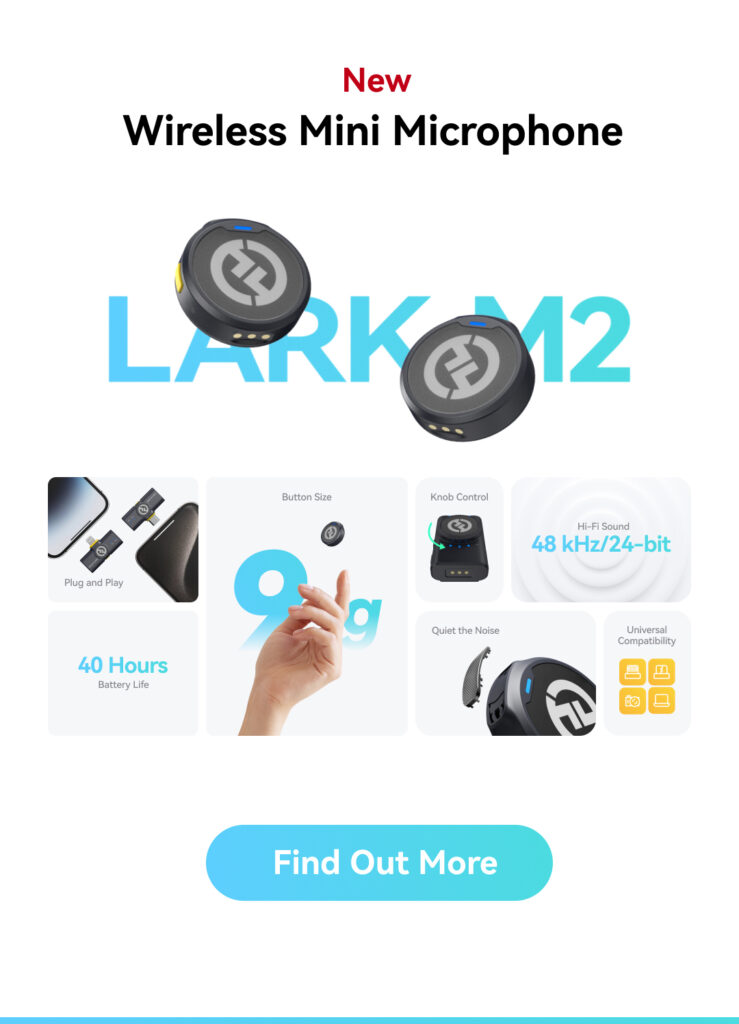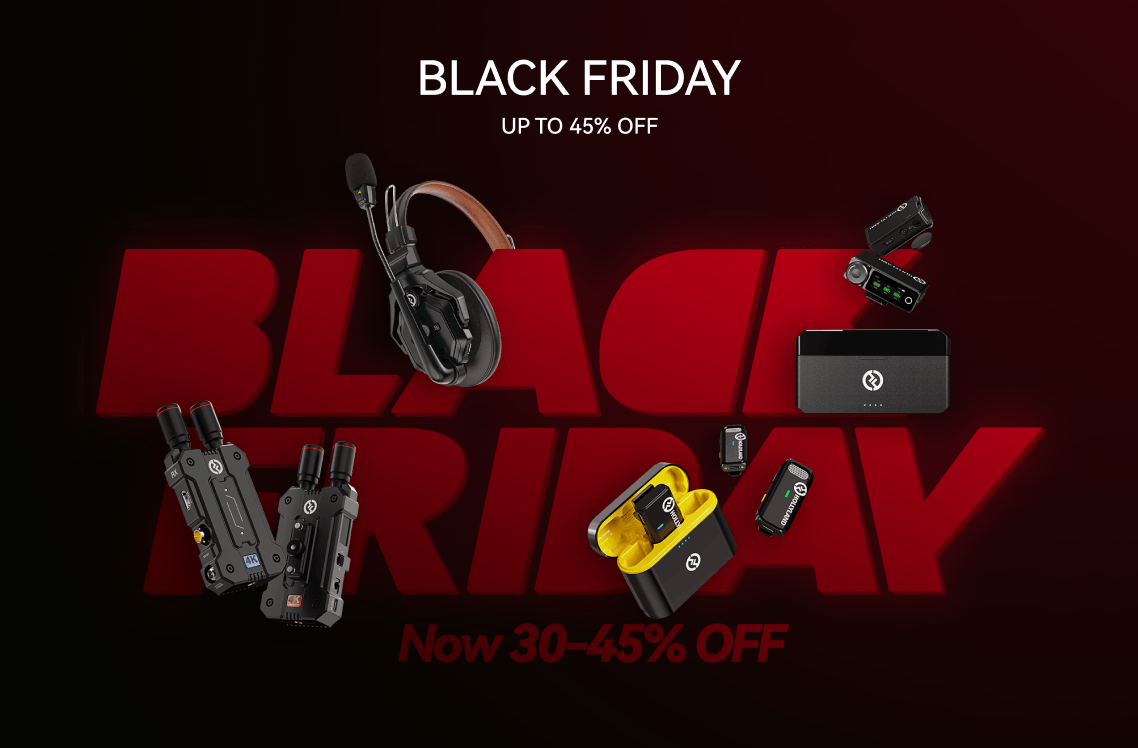Mobility and accessibility have become essential features of any audio recording or broadcasting setup in modern times. Having the correct portable wireless microphone can make all the difference in capturing high-quality audio without any effort, whether you’re a podcaster, a YouTuber, or a journalist on the go.
A good portable wireless microphone should be small, lightweight, and capable of delivering clear, reliable audio without interference or distortion. It should also be accessible with a variety of devices, such as cellphones, cameras, and laptops, and have a long sufficient battery life to allow uninterrupted recording or transmission.
With a lot of options on the market, choosing the best portable wireless microphone can be difficult. You can narrow down your choices and make wise choices by reviewing features such as sound quality, range, connectivity, and lifespan.
In this article, we will look at some of the best portable wireless microphones on the marketplace today, highlighting their features, advantages, and disadvantages to help you select the ideal one for your needs.
Let’s get started!
What to Consider When Buying a Portable Wireless Microphone?
Choosing the best portable wireless microphone requires taking into account a number of features to ensure that the microphone matches your particular recording or broadcasting goals. When choosing a portable wireless microphone, keep the following things in mind:
Compatibility:
Make sure the microphone is compatible with the recording or broadcasting device you’re using, such as a smartphone, camera, or laptop. Check the microphone’s connectivity options, such as Bluetooth or Wi-Fi, to ensure that it can pair with your device easily.
Battery life:
To ensure uninterrupted audio recording or broadcasting, a good portable wireless microphone should have a long-lasting battery. Consider the battery life and charging options for the microphone, such as USB charging or variable batteries.
Range:
If you need to travel around while recording or broadcasting, look for a microphone with a good range. Depending on the microphone, the range can range from a few meters to over 100 meters.
Frequency:
The frequency response of the microphone determines the range of sound frequencies that can be captured. To ensure high-quality audio capture, look for a microphone with a wide frequency response range.
Durability:
A portable wireless microphone is likely to be subjected to a variety of weather conditions, including humidity and dust. Make sure the microphone is tough enough to resist these conditions.
Sound Quality:
The sound quality of the microphone is the most important factor. Look for a microphone that can record clear, accurate audio with minimal background noise or interference.
Considering these factors, you can get the best portable wireless microphone for your recording or broadcasting needs.
As a whole, these portable wireless mics provide a variety of features and characteristics that make them appropriate for a variety of recording and broadcasting tasks. Because of its superb sound quality, various networking choices, and low pricing, the Hollyland Lark M1 is the top-rated option in 2023. Other alternatives, like the Shure MV7, Rode Wireless Go II, Sennheiser XSW-D, and Zoom H3-VR, have distinct features and advantages that make them worthwhile to investigate. You may evaluate each alternative by looking at its benefits, drawbacks, and quantitative measures.
Top 5 Portable Wireless Microphones
Here are the reviews of the top 5 portable wireless microphones in 2023:
Hollyland Lark M1 Portable Wireless Microphone System
- Brand: Hollyland
- Price: $149

Features:
- One-click HearClear noise cancellation
- Ultra-mini charging and storage two-in-one design
- 3-level volume preset
- HiFi sound quality
- 650ft (200m) long wireless distance
- Simple and sleek design
- Wide compatibility
Pros:
- Excellent sound quality.
- A low price.
- A compact design.
- A variety of connecting possibilities.
Quantitative Measurement:
- Frequency response range of 20Hz to 20kHz.
Shure SLX Wireless Microphone System
- Brand: Shure
- Price: $549

Features:
- Dynamic microphone featuring USB and XLR outputs.
- Built-in headphone monitoring.
- Touch panel control.
- Configurable DSP settings.
- Compatibility with the shure plus MOTIV software.
Pros:
- Excellent sound quality.
- multiple connecting choices.
- complex DSP settings.
- long-lasting build quality.
Cons:
- More expensive than other portable wireless mics.
- Requires a power source for USB connectivity.
- It is relatively heavy.
Quantitative measurement:
- It has 50Hz to 16kHz frequency response range.
Rode Wireless Go Compact Microphone System
- Brand: Rode
- Price: $199

Features
- It has a compact wireless microphone with a transmitter and receiver.
- omnidirectional mic capsules.
- 3.5mm TRS and USB-C connectivity.
- built-in recording.
- a battery life of up to 7 hours.
Pros:
- Ultra-portable design.
- Simple operation.
- Great sound quality.
- Built-in recording feature.
Cons:
- The range is limited when compared to other wireless mics.
- There are no advanced controls.
- There is no headphone monitoring.
Quantitative measurement:
- It has 50Hz to 20kHz frequency response range.
Sennheiser EW 100 G4 Wireless Microphone System
- Brand: Sennheiser
- Price: $599

Features:
- It has a wireless lavalier microphone set with transmitter and receiver.
- 3.5mm TRS and XLR connectivity.
- A battery life of up to 5 hours.
- One-touch synchronization.
Pros:
- High-quality sound.
- Simple operation.
- Extended reach.
- Compact design.
Cons:
- A little more costly than other wireless lavalier microphone solutions.
- Only a few microphone location options.
Quantitative measurement:
- It has 80Hz to 18kHz frequency response range.
Zoom H3-VR
- Brand: Zoom
- Price: $249

Features:
- Portable microphone featuring Ambisonic microphone array.
- 5mm TRS and USB connectivity.
- MicroSD card slot for recording.
- Adjustable mic gains and position.
Pros:
- Perfect for 360-degree audio recording.
- Flexible connecting options.
- Built-in recording feature.
Cons:
- The range is limited compared to other wireless mics.
- It requires a power source for USB connectivity.
- It may require some post-processing for ideal results.
Quantitative measurement:
- Frequency response range of 20Hz to 20kHz.
Comparison
The Hollyland Lark M1 is an excellent choice for individuals looking for a portable wireless microphone. Here are some key aspects to consider:
Portability:
The Hollyland Lark M1 is a small and lightweight microphone that is easy to take with you wherever you go.
Wireless communication:
The microphone employs Bluetooth 5.0 technology for dependable and stable wireless communication, allowing you to move around more freely while recording.
Sounds Quality:
To capture clear and natural-sounding sounds, the microphone employs a high-quality omnidirectional microphone capsule.
Battery Life:
With a battery life of up to 6 hours, the Hollyland Lark M1 allows you to record for an extended amount of time without worrying about running out of power.
Price:
The Hollyland Lark M1 is reasonably priced, making it an appealing alternative for individuals in the market for a high-quality portable wireless microphone.
Based on these considerations, we recommend the Hollyland Lark M1 to anyone looking for a portable wireless microphone. It is an ideal option for a wide spectrum of users due to its portability, wireless connectivity, audio quality, battery life, and price.
Conclusion:
The Hollyland Lark M1 is the best portable wireless microphone after examining numerous variables such as sound quality, connectivity, portability, and durability.
The cardioid pickup pattern of this microphone effectively captures the intended sound while minimizing background noise, making it ideal for live performances and recording. It also boasts a strong structure that can resist wear and tear, and its wireless capabilities make it simple and flexible to use.
When choosing a portable wireless microphone, it is critical to consider your unique needs as well as your budget. Other outstanding choices include the Sennheiser e965, Audio-Technica AT4053B, and Rode NTG2. Finally, it is critical to invest in a high-quality microphone capable of producing clear and precise sound in any situation.
Finally, the ideal portable wireless microphone for you will be determined by your individual requirements and budget.
FAQs:
Q: What are portable wireless microphones?
A: Portable wireless mics rely on wireless technology to transfer audio signals to a receiver, allowing the user to roam around freely without being attached to a cable connection.
Q: What are the advantages of using a wireless portable microphone?
A: The ability to move around freely, enhanced flexibility, and improved sound quality owing to the elimination of cable interference are all advantages of using a portable wireless microphone.
Q: What are some of the most important things to look for in a portable wireless microphone?
A: Range, battery life, sound quality, ease of use, and compatibility with your other equipment are important factors to look for in a portable wireless microphone.
Q: What are some popular portable wireless microphone brands?
A: Hollyland Lark M1, Shure, Sennheiser, and Rode are some prominent brands of portable wireless mics.
Q: How much do portable wireless microphones cost?
A: The price of a portable wireless microphone varies greatly based on its features and quality. Entry-level devices can be found for less than $100, whilst professional-grade models can cost hundreds or even thousands of dollars.
Q: How can I connect a wireless portable microphone to my device?
A: To connect a portable wireless microphone to your device, normally use Bluetooth or a comparable wireless technology to pair the microphone with the receiver. For precise details on how to connect your microphone, go to the manufacturer’s instructions.
Q: Can portable wireless mics be utilized for concert performances or public speaking?
A: Because of their portability and ease, portable wireless mics are often employed for live performances and public speaking events. However, it is critical to select a microphone with an appropriate range and sound quality for the desired usage.







